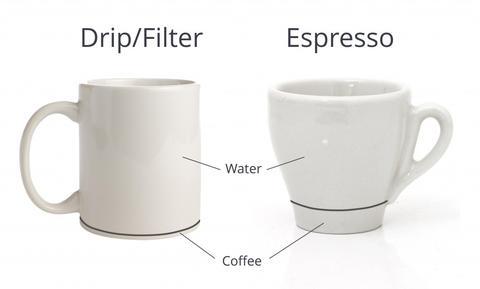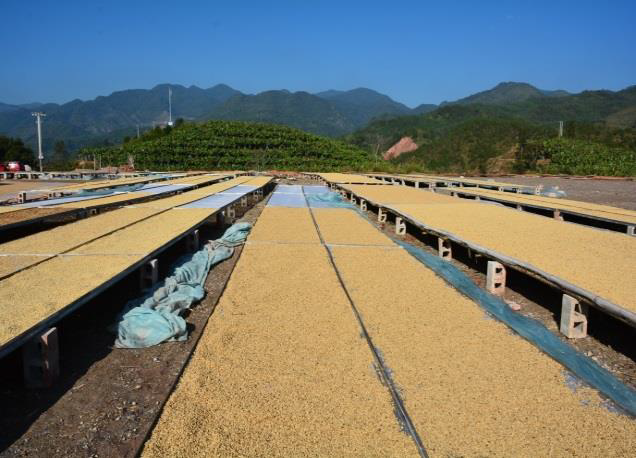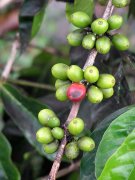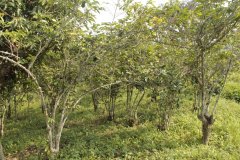How to change the taste, flavor and concentration of espresso to adjust the concentration of Italian coffee
For professional baristas, please follow the coffee workshop (Wechat official account cafe_style)
Concentration change of Italian concentrated cooking
The previous article explained the importance of the amount of powder in the Italian concentrated cooking formula. Today we are going to talk about concentration. Now when people talk about coffee concentration, they are likely to talk about one of the following three:
Strong and weak flavor
Taste, texture, or consistency
Concentration of dissolved coffee flavor substances
Generally speaking, these three things can be said to be the same thing, so in order to cause unnecessary trouble. The author defines these words first:
The following words used by the author are "concentration", "strong" and "light", which describe the concentration of dissolved coffee flavor substances, or total dissolved substances (TDS).
The word "intensity" used by the author below describes the intensity of flavor.
The following words used by the author are "rich", "tasteless", "heavy" and "light" to describe the taste, texture and consistency.
Coffee concentration
In order to discuss coffee concentration quickly and efficiently, we describe it as a percentage of total output. Most espressos have a concentration range of 7% to 12%, which means that the water content is 88%. 93%. The concentration of dripping coffee is generally between 1.2% and 1.8%, which means that the water content is 98.2% 98.8%.

"98.8% of the water?" You can't help asking. Uh, yeah. Water is the main ingredient in coffee, but sometimes it doesn't feel that obvious. Because of the strong flavor of coffee, subtle changes in concentration can be detected by our taste buds. People with a keen sense of taste can feel a 0.1% change in coffee concentration. This means that the taste experience brought about by the extremes at both ends of the espresso concentration range (7% color 12%) is very different.
Coffee concentration plays two major roles in our taste experience. The first one is the strength of the flavor. The second is the taste, texture or consistency of the coffee.
Flavor intensity
Espresso can be 10 times as dense as drip coffee. Because there will be more than 10 times the flavor substance that irritates your tongue, you will definitely feel the flavor getting stronger. Although this kind of intensity is not as simple as turning on a light.
Concentration can also affect our taste perception. With the increase of coffee concentration, our ability to distinguish the various flavors in coffee is obviously weakening. When the concentration is higher, the perceived flavor intensity of coffee will also increase rapidly. Although different concentrations of the same coffee contain the same flavor, there will be a very different interpretation on your taste buds.
A low concentration of coffee does not necessarily mean tasteless or light. Sometimes, a lower concentration allows us to enjoy more subtle flavors, which are covered up at high concentrations. The concentrated flavor of an Italian dish with a lighter and more subtle flavor may be less intense, but it is sometimes more comfortable to drink than a strong one.
A higher concentration of espresso can affect our ability to feel some of the natural flavors in the coffee. To experience, you can use traditional Italian concentrated and deep-baked beans to produce Italian concentrate with short time and high concentration, and then dilute it with different amount of water. When drinking the highest concentration, you may mistakenly think that the baking degree is not that deep. But once diluted, you will easily find that the flavor characteristics of the baking method become less obvious.
No matter what kind of coffee it is or how it is produced, when the concentration of the coffee is high to a certain extent, the coffee will become too bitter to swallow. Unfortunately, our tongues have not evolved the ability to accurately measure the taste of highly concentrated liquids. If you are not sure whether the taste is bitter because of the concentration, you can dilute the drink with a certain proportion of water and then test it. If the bitterness disappears, then concentration is the culprit. If the bitterness is still there, the problem lies elsewhere.
Taste, texture, or consistency
The taste element is the most important part of a good cup of coffee. When tasting a cup of coffee, everyone expects a certain degree of taste, texture or consistency. There will also be regional and cultural differences in preferences, but to be fair, Italian concentration should generally be enough to make the taster feel thick and rich. And dripping coffee should also have a certain taste and texture, so as not to taste like light water.
Here are some words that the author uses to describe the concentration of coffee, in the order from low to high. Some of them can also be used to describe the intensity of flavor, but these words and the order in which they are arranged here are only related to the texture, texture and concentration of the mellow thickness.

This vocabulary is not exhaustive, but it should give you a fairly large vocabulary to describe the concentration of any coffee you drink.
The perfect concentration of coffee
Like all the subjective parts of coffee, the perfect coffee concentration is hard to define. Everyone has some special needs for coffee. Taking the author as an example, the ideal concentration should not only bring rich taste and consistency, but also can not damage the extracted flavor. The following is the coffee concentration range that the author likes.
For Italian concentration, the arbitrary value of the 7.5%-9.5%TDS range. Coffee with a concentration higher than this range will cause the author's taste buds to convey a considerable amount of bitterness in the brain. Below this range, you enter a concentration range of 2%, 7%, which is relatively unexplored (but tasty). No matter how it is made, coffee in this concentration range is difficult to define as drip coffee or Italian concentrate.
For dripping coffee, the author prefers the TDS range of 1.3% Muay 1.7%. Coffee with a concentration of less than 1.3% is unpalatable to the author, lacks taste, and always feels less flavorful. Oddly enough, about 2% of the coffee also let the author down. The author feels as if with the change of coffee concentration, "delicious" will have some peaks and troughs, and 2% happens to be a trough. The concentration of 2% is too high for drip coffee, and it is not as strong as a cup of delicious American coffee compared to Italian concentrate.

As always, personal experience is king. The author believes that it is very important for all baristas to study and experiment with the concentration variable alone.
Important Notice :
前街咖啡 FrontStreet Coffee has moved to new addredd:
FrontStreet Coffee Address: 315,Donghua East Road,GuangZhou
Tel:020 38364473
- Prev

How much coffee powder does it take to make espresso?
Professional barista communication please pay attention to the coffee workshop (Wechat official account cafe_style) Italian concentrated brewing formula: powder filling analysis Italian concentrated brewing formula contains the following three main variables: the amount of filling powder, the dry weight of coffee powder in the handle, the weight of espresso produced by the amount of coffee powder, the contact time between coffee powder and water, the amount of powder filling is like
- Next

Do you need to preheat coffee cups to make Italian coffee? Why do coffee cups need to be warm?
Professional barista communication, please pay attention to coffee workshop (Weixin Official Accounts cafe_style) Italian coffee cup whether need warm cup? It should be said that most people who make coffee still know that the coffee cup used to make coffee is preheated. Although many people don't take this problem seriously at work, there are probably few people who don't know that coffee cups need to be preheated.
Related
- Beginners will see the "Coffee pull flower" guide!
- What is the difference between ice blog purified milk and ordinary milk coffee?
- Why is the Philippines the largest producer of crops in Liberia?
- For coffee extraction, should the fine powder be retained?
- How does extracted espresso fill pressed powder? How much strength does it take to press the powder?
- How to make jasmine cold extract coffee? Is the jasmine + latte good?
- Will this little toy really make the coffee taste better? How does Lily Drip affect coffee extraction?
- Will the action of slapping the filter cup also affect coffee extraction?
- What's the difference between powder-to-water ratio and powder-to-liquid ratio?
- What is the Ethiopian local species? What does it have to do with Heirloom native species?

